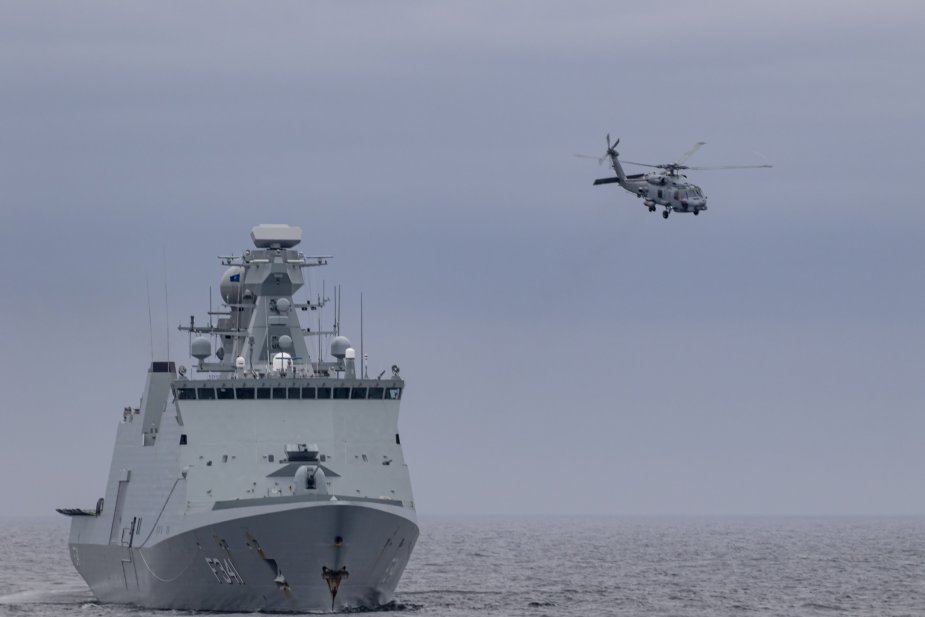Breaking news
Denmark send frigate Absalon to secure shipping traffic in the area around the gas leaks in the Baltic Sea.
According to information published by the Danish MoD on September 30, 2022, a helicopter and ships from the Danish Armed Forces secure shipping traffic in the area around the gas leaks in the Baltic Sea.
Follow Navy Recognition on Google News at this link
 Danish Navy's Absalon class frigate Absalon (Picture source: Danish government)
Danish Navy's Absalon class frigate Absalon (Picture source: Danish government)
The frigate Absalon and the environmental ship Gunnar Thorson are present in the waters around the Nord Stream 1 and Nord Stream 2 gas leaks in the Baltic Sea, helping to ensure that civilian ships do not enter the no-go zones. In addition, the Defence contributes a helicopter capable of conducting aerial surveillance of the waters.
A written warning, known as a navigational warning, has been issued to civilian shipping in the area to avoid sailing within a five-mile radius of the leaks. There is a general focus on the particular situation in the area, but there may be ships that are not aware of the warning and therefore head for the no-go zones anyway.
In these cases, Defence units can call the ship on the radio and guide them away from the area. If a ship is heading directly through the exclusion zone and contact cannot be made by radio, physical contact can be made with the ship, for example by launching a small boat.
About the frigate Absalon
HDMS Absalon (F341) and her sister ship Esbern Snare are the two members of the Absalon class. The lead ship of the class is named after Danish archbishop and statesman Absalon and received full operational status in 2007.
The ships are the first in a series of RDN vessels tasked with carrying out new types of missions, and are to form the backbone of the international operations that the RDN is increasingly focusing on.
The Absalon-class ships are primarily designed for command and support roles, with a large ro-ro deck, but with their many offensive weapons and new anti-submarine weapons and tasks, the class was changed to frigates in 2020.
The three frigates of the succeeding Iver Huitfeldt class are similar to the Absalon-class vessels but without the large ro-ro deck.
The class is based on a frigate-like design, but built with an internal multipurpose deck (flex deck) and a stern vehicle ramp. The ships can serve as command platforms for a staff of 75 persons (naval or joint staff) with a containerized command and control centre, transport and base of operations for a company-sized landing force of some 200 soldiers with vehicles.
Alternatively, the flex deck can be used for mine-laying operations with a capacity of some 300 mines, or be fitted out for mine-clearing operations and launch and recover mine detecting and clearing equipment via a retractable gantry crane, adjacent to the stern vehicle ramp, which also is used for launching and recovering the fast landing craft.
Furthermore, the flex deck can support a containerized hospital or simply transport a number of ISO standard containers or some 55 vehicles, including up to seven MBTs. The ships can carry two landing craft, personnel (LCPs) (Storebro SB90E), two rigid hull inflatable boats and two EH101 helicopters.



























